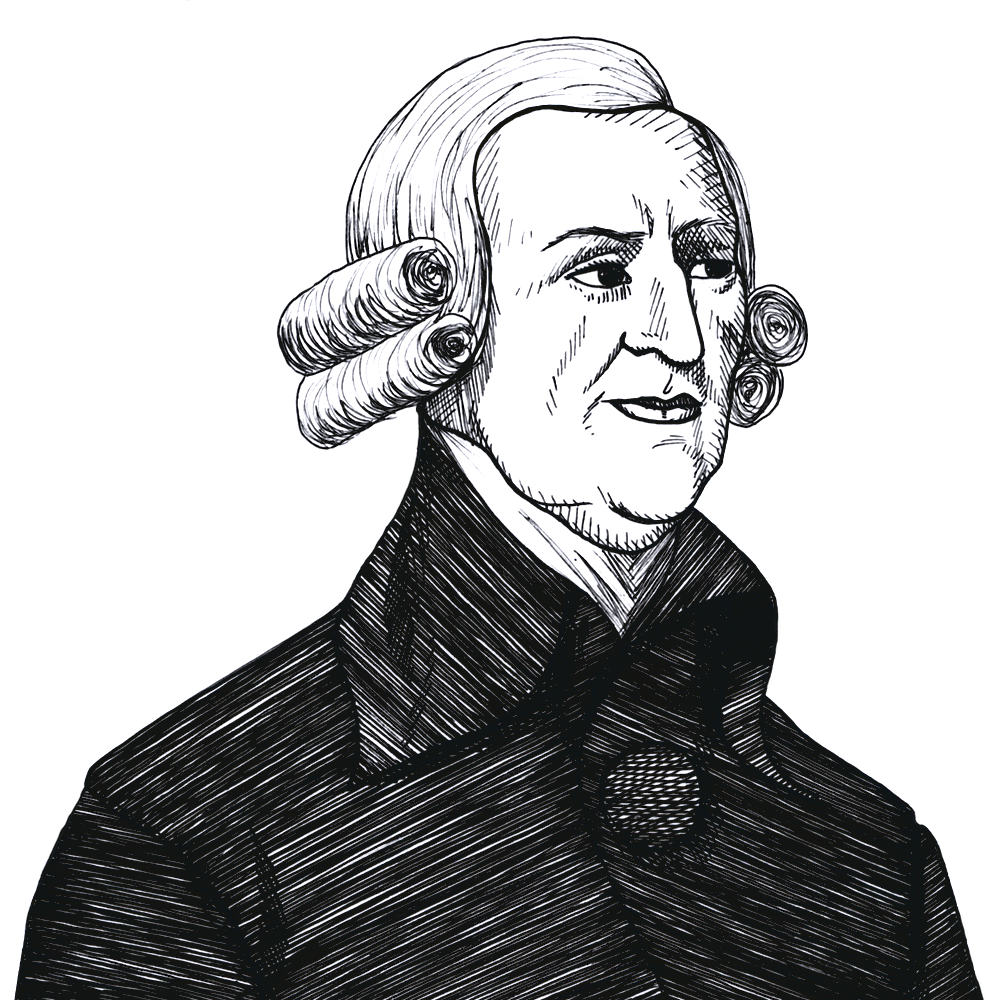
Adam Smith on Admiration of the Rich and Powerful
Found in: Theory of Moral Sentiments and Essays on Philosophical Subjects (1869)
The Scottish moral philosopher Adam Smith (1723–1790) was the author of two books, The Theory of Moral Sentiments (1759) and An Inquiry into the Nature and Causes of the Wealth of Nations (1776).
Smith’s Theory of Moral Sentiments lays out the way Smith believes we learn (and build) systems of morality. For Smith, people learn to be moral through the development of a moral sense. Beginning in childhood and through repeated experience, we develop rules for how to behave based on our reactions to each other. Over time, these rules form guidelines for proper conduct and morality.
Smith says that we want others to react with sympathy to our actions, and that we enjoy sympathizing with the reactions of others. Because our moral system is based on observation of others, says Smith, it encourages a preference for observable traits.
Because “it is agreeable to sympathize with joy” (TMS I.iii.1.5), people tend to look favourably on those whose lives seem pleasant. Because they look favourably on such circumstances, they seek them for themselves so that others will look favourably upon them, too. In contrast, it’s unpleasant to sympathize with sorrow, and for strangers, who cannot offer the comfort of friendship, to witness our pain or misfortune.
Smith believes that this encourages us to look with undue approbation on those whose success and status are obvious to the world, and to hide in shame when we are in poverty or misfortune. In Part 1, section 3, chapter 3 of Theory of Moral Sentiments, Smith writes:
Society
This disposition to admire, and almost to worship, the rich and the powerful, and to despise, or, at least, to neglect persons of poor and mean condition, though necessary both to establish and to maintain the distinction of ranks and the order of society, is, at the same time, the great and most universal cause of the corruption of our moral sentiments. (TMS I.iii.3.1)